Anne Nealon, a student at Broadway High School in Rockingham, Virginia, remotely operates the NRAO 20-meter telescope from her school library. The 20-meter telescope became the first radio telescope in the robotic suite known as SKYNET, an educational program run out of the University of North Carolina, Chapel Hill.
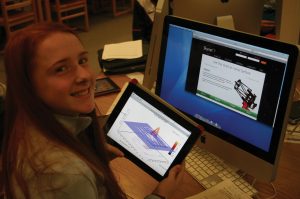
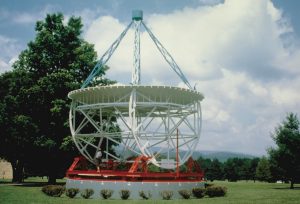
Grote Reber’s Telescope
Grote Reber’s original 31-foot radio telescope was reconstructed by him in Green Bank, West Virginia. It is a historic monument for its use in Reber’s discoveries of bright radio sources in the sky, his mapping of the Milky way, and his observations which led to the discovery of non-thermal radiation.
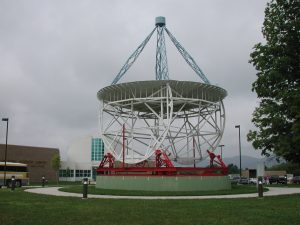
Grote Reber’s Telescope and the Green Bank Science Center
Grote Reber’s original 31-foot dish radio telescope was reconstructed by him in Green Bank, West Virginia and is viewable by visitors to the Green Bank Science Center (in the background left). This telescope is a historic monument for its use in Reber’s discoveries of bright radio sources in the sky, his mapping of the Milky way, and his observations which led to the discovery of non-thermal radiation.
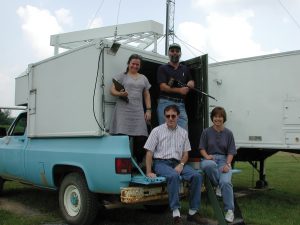
The RFI Team at Green Bank
This is a photo of the Radio Frequency Interference Group in Green Bank, taken some years ago. Although some of the staff members have since moved on, the duties are still the same: to ensure that on-site and local sources of radio frequency interference are nulled.
The Green Bank Observatory sits inside a 13,000 square mile radio protection zone set aside by the Government. The truck here is equipped with antennas to pinpoint sources of interference around the countryside. Even a short in a heating blanket miles away from the Green Bank Telescope will be seen clearly by the GBT and ruin its astronomical observations. Microwave ovens in the buildings here get their own shielding boxes called “Faraday cages.”
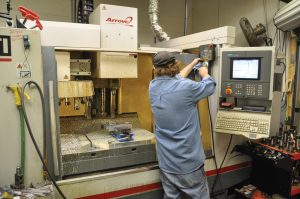
Working the Mill
Green Bank Machinist Dwayne Barker readies a new project on a giant mill in the machine shop.
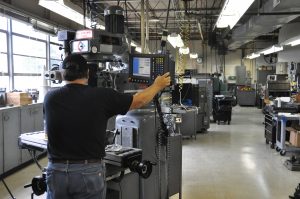
Green Bank Machine Shop
With lathes, mills, and specially-trained staff, the machine shop in Green Bank makes critical hardware for all of our telescopes around the world. They use aluminum, brass, and steel to create pieces as small as those that fit into the receivers to the huge feed horns that are bolted through the telescope dishes.





